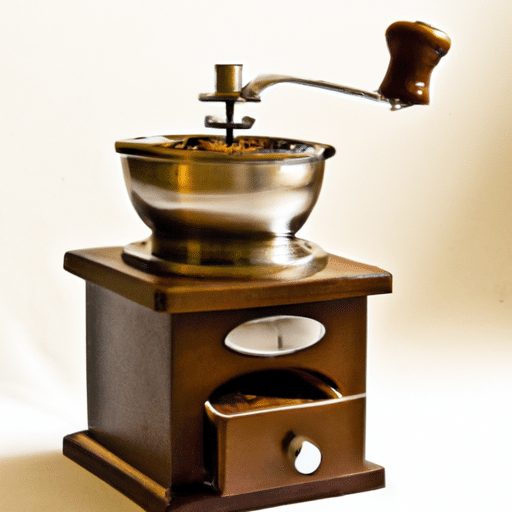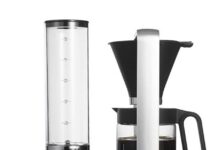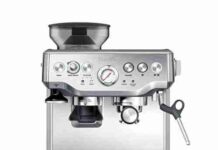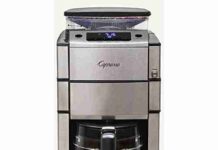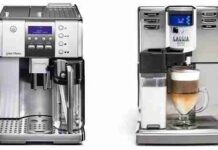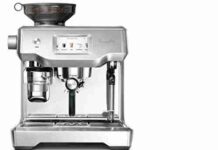In our quest to brew the perfect cup of coffee, one question that often arises is how fine or coarse should coffee grounds be for a standard coffee maker? Finding the ideal grind size can make all the difference in achieving that perfect balance of flavor and extraction. Whether it’s the bold flavor of a French press or the smoothness of a drip machine, understanding the importance of grind size opens up a world of possibilities for coffee enthusiasts everywhere. Join us as we explore the art of grinding and discover the secrets to unlocking the full potential of our morning brew.
Effects of Coffee Ground Size on Brewing
When it comes to brewing coffee, the size of the coffee grounds plays a significant role in determining the extraction rate and flavor profile of the final cup. The brewing time is also affected by the coffee ground size. Understanding these effects is crucial for achieving the perfect cup of coffee.
Extraction Rate of Coffee
The extraction rate refers to how much flavor compounds are extracted from the coffee grounds during brewing. The size of the coffee grounds directly affects the amount of surface area that is available for extraction. Finer grounds have a larger surface area, allowing for faster extraction and resulting in a stronger and more concentrated brew. Coarser grounds have less surface area, leading to a slower extraction and a milder flavor.
Flavor Profile of Coffee
The size of the coffee grounds significantly impacts the flavor profile of the brewed coffee. Finer grounds tend to produce a more intense and robust flavor with a heavier body. On the other hand, coarser grounds generally result in a milder and smoother cup of coffee with a lighter body. It’s important to keep in mind that personal preferences for flavor can vary, so experimenting with different ground sizes is key to finding the ideal flavor profile for oneself.
Brewing Time
The brewing time is directly influenced by the size of the coffee grounds. Finer grounds require less brewing time due to their larger surface area, resulting in a faster extraction process. Coarser grounds, on the other hand, require a longer brewing time to extract the desired flavors. It’s essential to adjust the brewing time accordingly based on the grind size to achieve the optimal flavor extraction.
Factors to Consider for Choosing Coffee Grounds Size
When selecting the size of the coffee grounds, several factors need to be considered. These factors include the type of coffee maker being used, the brewing method employed, and personal preference.
Coffee Maker Type
Different types of coffee makers require different coffee ground sizes to achieve the best results. For example, espresso machines typically require a very fine grind, while French presses work best with a coarse grind. Considering the type of coffee maker being used is crucial in determining the appropriate grind size for optimal flavor extraction.
Brewing Method
Various brewing methods, such as pour-over or drip coffee, have different requirements when it comes to coffee ground size. Pour-over methods often call for a medium grind, while drip coffee makers commonly work well with a medium-fine grind. Understanding the specific brewing method being employed is essential in choosing the right coffee ground size.
Personal Preference
Lastly, personal preference plays a vital role in determining the coffee ground size. Some individuals prefer a strong and intense cup of coffee, while others enjoy a milder and smoother flavor. Experimenting with different grind sizes allows for the customization of brewing to suit individual preferences and taste buds.
Fine Coffee Grounds
Fine coffee grounds refer to a grind size that is relatively small and powdery. They are commonly used in espresso machines, Turkish coffee, and certain brewing methods that require a shorter brewing time.
Description of Fine Coffee Grounds
Fine coffee grounds have a texture similar to sand or fine sugar. They feel smooth to the touch and have a powdery consistency. The size of the particles is smaller compared to other grind sizes, resembling granules that are barely discernible.
Pros of Fine Coffee Grounds
One of the significant advantages of using fine coffee grounds is the faster extraction rate. The small particle size allows for greater surface area contact with water during brewing, resulting in a quicker and more concentrated extraction of flavor compounds. This leads to a bold, intense, and rich flavor profile. Fine grounds also tend to work well with espresso machines, as the high pressure helps extract the flavors efficiently.
Coarse Coffee Grounds
Coarse coffee grounds are larger in size compared to fine grounds. They are commonly used in French presses, cold brew methods, and brewing techniques that require a longer brewing time.
Description of Coarse Coffee Grounds
Coarse coffee grounds have a more textured and uneven appearance. The particles are bigger and more visible, resembling rough sand or small pebbles. The larger size of the particles allows for a slower and gentler extraction process.
Pros of Coarse Coffee Grounds
The main advantage of using coarse coffee grounds is the milder and smoother flavor profile it produces. The slower extraction process allows for the gentle release of flavor compounds, resulting in a more balanced and less intense cup of coffee. Coarse grounds are particularly suitable for brewing methods like French presses, where a longer brewing time is required for a fuller, richer flavor.
Ideal Coffee Ground Size for Standard Coffee Maker
Standard coffee makers are one of the most popular brewing methods worldwide. To achieve the best results, it is important to choose the appropriate coffee ground size that complements the features of a standard coffee maker.
Standard Coffee Maker Features
Standard coffee makers typically have a drip brewing method, where hot water passes through a filter containing the coffee grounds. They typically have a relatively short brewing time, ranging from a few minutes to around ten minutes. The filter, along with the brewing time, affects the level of extraction and the resultant flavor.
Common Recommendations
For a standard coffee maker, a medium-fine grind is generally recommended. This grind size achieves a good balance between extraction rate and flavor profile. It allows for an efficient extraction without over-extracting the flavors and producing a bitter or burnt taste. The medium-fine grind size ensures that the brewing time is not too short or too long, resulting in a well-rounded and flavorful cup of coffee.
Adjusting Coffee Ground Size for Different Coffee Makers
Different types of coffee makers require specific coffee ground sizes to optimize flavor extraction. Here are some guidelines for adjusting the grind size for different coffee makers commonly used.
Espresso Machines
Espresso machines are known for their strong and concentrated coffee. To achieve the perfect shot of espresso, a fine grind is necessary. The fine grind size allows for a high-pressure extraction process, producing a rich and intense cup of espresso.
French Press
French presses require a coarse grind size to achieve the best results. The larger particle size allows for a slower extraction with minimal sediment in the final cup. The coarse grind helps to create a robust and full-bodied flavor that is characteristic of French press brewing.
Pour Over
Pour-over brewing methods such as the Hario V60 or Chemex typically require a medium grind size. The medium grind allows for a controlled and balanced extraction, resulting in a clean and vibrant cup of coffee. Adjusting the grind size within the medium range can help fine-tune the flavor profile according to personal preferences.
Drip Coffee Maker
Drip coffee makers commonly work well with a medium-fine grind size. This size allows for a good extraction rate while avoiding over-extraction. It ensures a flavorful cup without any bitterness or acidity. Experimenting with the grind size within the medium-fine range can help customize the taste further.
Grinding Coffee Beans for Optimal Size
To achieve the desired coffee ground size, investing in a proper grinder is essential. Here are some considerations when selecting a grinder and grinding coffee beans.
Choosing the Right Grinder
There are two main types of coffee grinders: blade grinders and burr grinders. Burr grinders are generally preferred for their ability to provide a more consistent grind size. They offer various settings to adjust the fineness or coarseness of the grind, allowing for precise control over the extraction process.
Grind Size Consistency
Consistency in grind size is crucial for achieving a balanced and uniform extraction. Uneven or inconsistent grind sizes can lead to unevenly extracted flavors and an imbalanced cup of coffee. A good quality burr grinder ensures a consistent grind size, resulting in a more even extraction and a better-tasting brew.
Adjusting Grind Size
When grinding coffee beans, it is important to adjust the grind size according to the desired brewing method. Investing in a grinder with adjustable settings allows for greater flexibility and customization. Grind size adjustments should be made gradually and tested through brewing to achieve the perfect balance of flavor, extraction, and brewing time.
Experimenting with Coffee Ground Sizes
With the vast variety of coffee ground sizes available, experimenting with different sizes can lead to exciting discoveries in flavor and aroma. Conducting taste test comparisons with different grind sizes can help identify personal preferences and find the perfect balance.
Taste Test Comparisons
To conduct a taste test comparison, brew multiple cups of coffee using different grind sizes. Pay attention to the flavor, body, acidity, and overall profile of each cup. Compare the strengths and weaknesses of each grind size, noting the differences in flavor intensity and texture. This experimentation can help determine which grind size provides the most enjoyable and preferred cup of coffee.
Finding the Perfect Balance
Finding the optimal coffee ground size is a personal journey. By experimenting and being open to trying different grind sizes, you can discover the perfect balance that suits your taste buds. It’s essential to remember that personal preferences may change over time, so adapting and evolving your grind size choices is part of the coffee brewing experience.
Considerations for Pre-Ground Coffee
While grinding coffee beans fresh is often recommended for maximum flavor, pre-ground coffee can still be a convenient option for many coffee lovers. Here are some considerations when using pre-ground coffee.
Pre-Ground Coffee Shelf Life
Pre-ground coffee has a limited shelf life. Exposure to air accelerates the oxidation process, leading to a decrease in flavor and aroma over time. It is best to use pre-ground coffee within two weeks of opening the package for optimal freshness and flavor.
Alternative Brewing Methods for Pre-Ground Coffee
If using pre-ground coffee, certain brewing methods can better accommodate the grind size. Methods like French press or cold brew tend to be more forgiving with pre-ground coffee, as they require a coarser grind. Adjusting the brewing parameters, such as water-to-coffee ratio or steeping time, can help optimize the flavor extraction when using pre-ground coffee.
Conclusion
Choosing the right coffee ground size is an essential step towards brewing the perfect cup of coffee. Understanding the effects of coffee grind size on extraction rate, flavor profile, and brewing time is crucial for achieving a well-balanced and enjoyable brew. By considering factors such as coffee maker type, brewing method, personal preference, and making adjustments accordingly, coffee lovers can uncover the full potential of their coffee beans and create a delightful coffee experience each time they brew. So experiment, taste, and savor the journey of finding the ideal coffee ground size that satisfies your unique coffee cravings.


